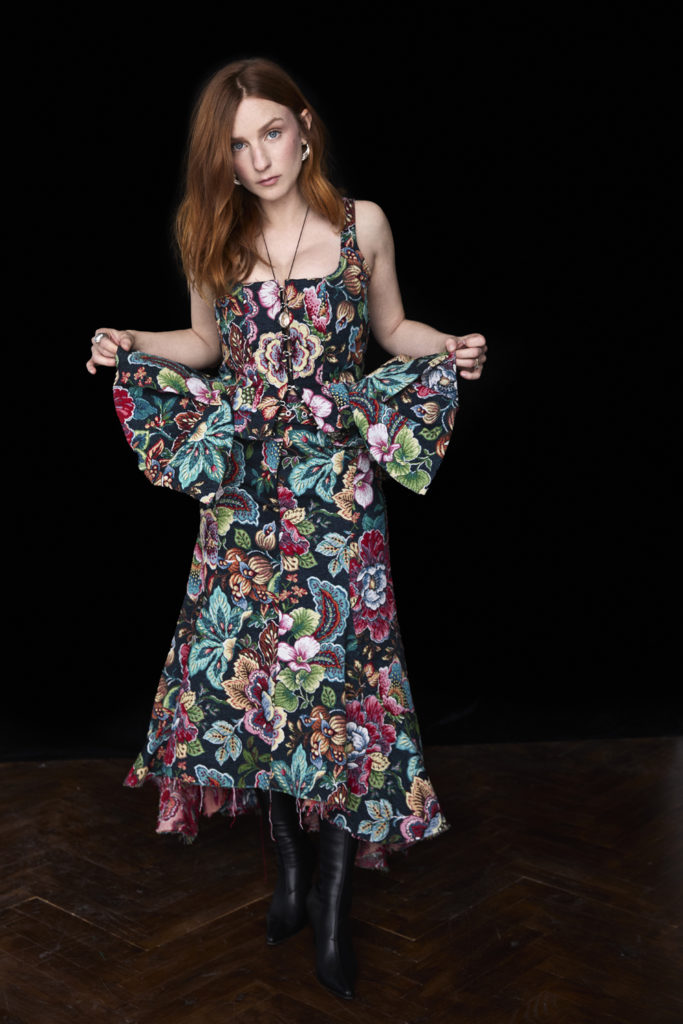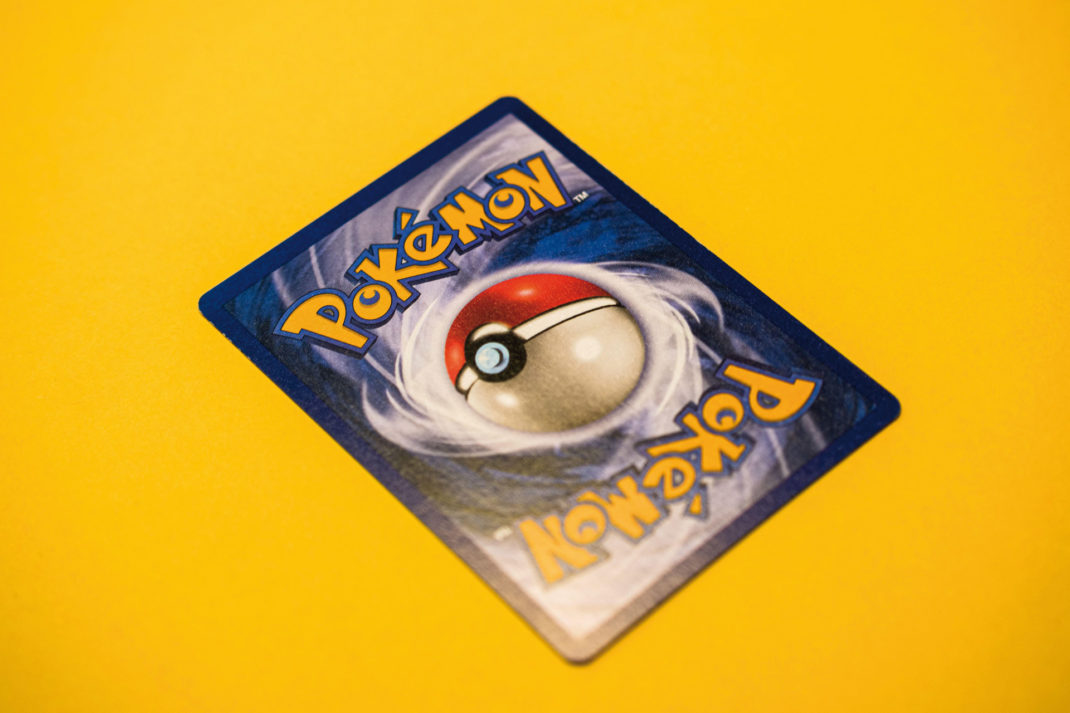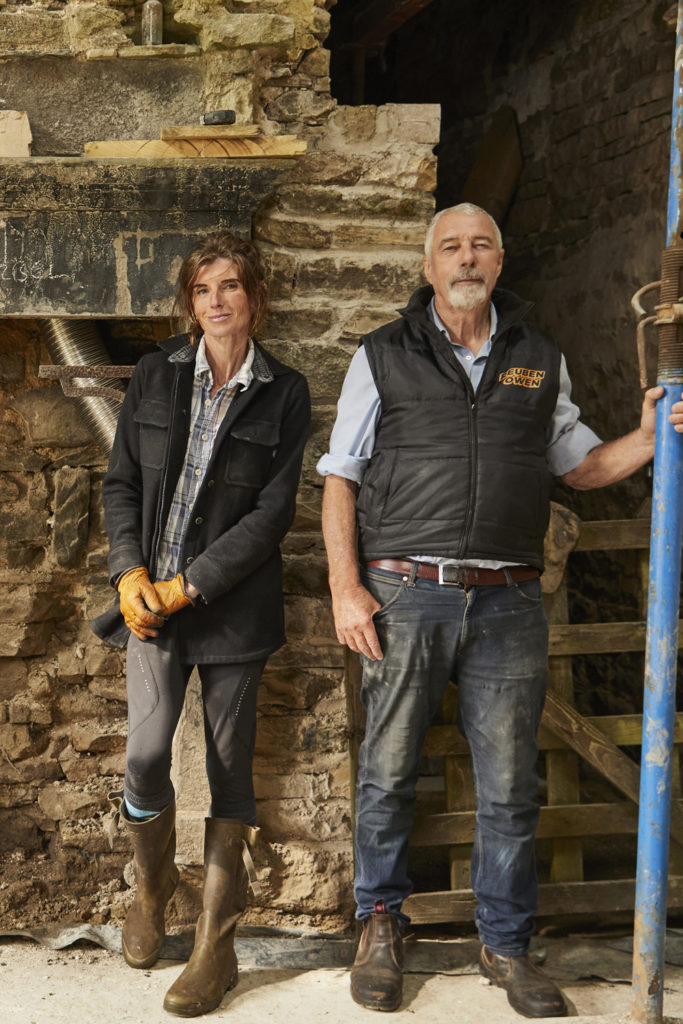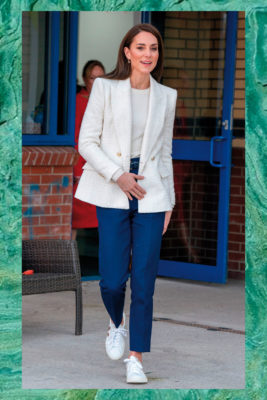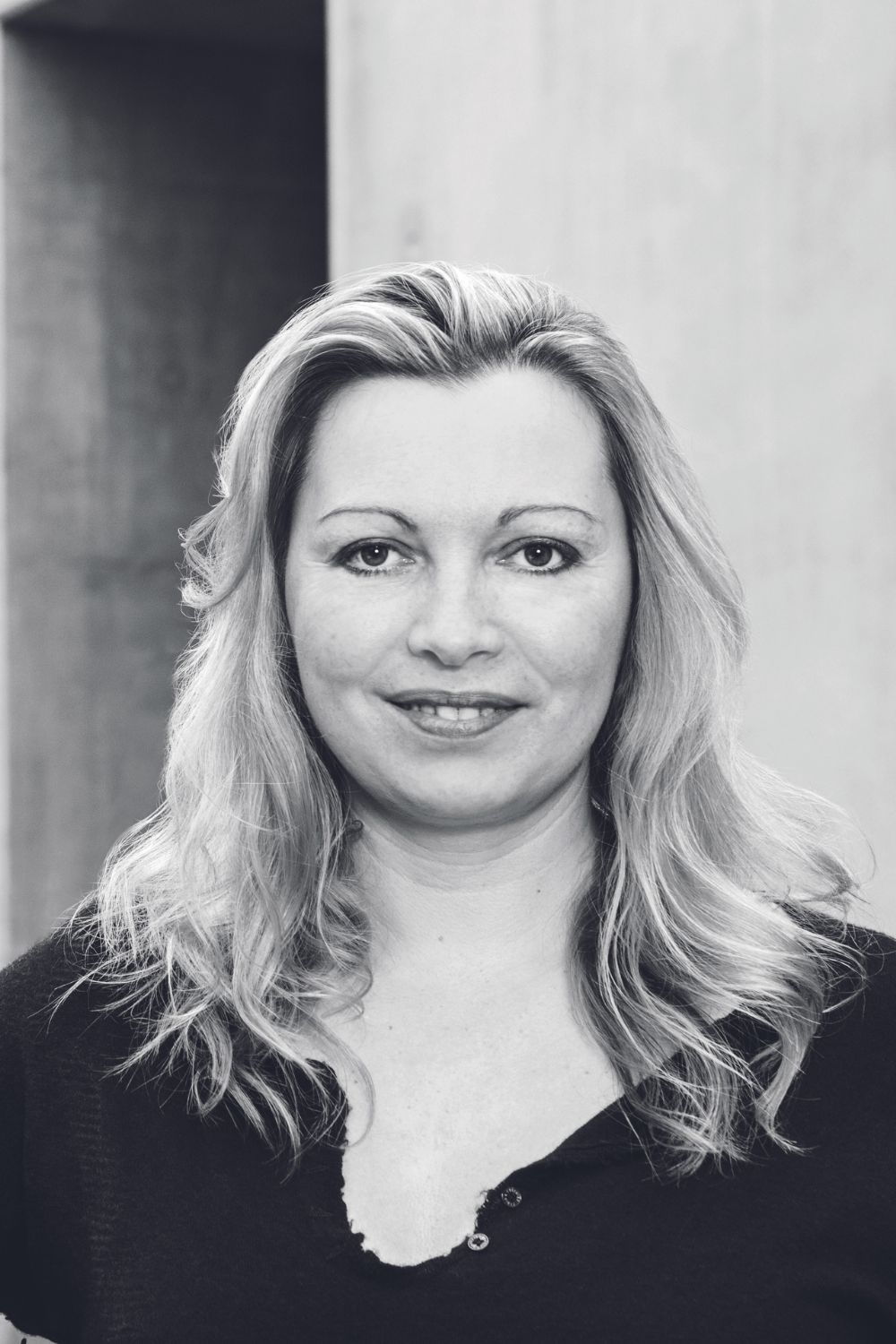
My Little Green Book: Carole Collet, Biodesign Expert
By
9 months ago
Here's what nature can teach us about the world of fashion
Carole Collet is the fashion professor shaping the future of luxury, says Lisa Grainger.
Interview: Carole Collet, Biodesign Expert
If you haven’t seen the BBC’s YouTube videos of the 66,000 tons of used clothing that is dumped every year in Chile’s Atacama Desert, or the 15 million items ‘donated’ to Ghana every day, and are feeling brave, have a look – although you might need a stiff drink to hand.
It’s pretty shocking viewing, even for those who’ve been monitoring fashion waste for decades, like Carole Collet, Professor in Design for Sustainable Futures at Central Saint Martins. If the clothes were made of organic fibres, she explains, they’d at least decompose and feed the earth like compost. But they’re not. They’re often woven from petroleum-derived fibres or pesticide-covered cotton. They’re dyed with chemicals that can poison our water systems and woven from plastics whose micro-particles often end up in living creatures. Like oil, they toxify our planet.
When she first came to London in 1991, the French-born textiles graduate had no idea how destructive fashion was. Then she started to visit factories. ‘I suddenly realised that textile factories were only beside rivers so they could get rid of waste,’ she says, ‘and that cotton was not a good “natural” fibre if it was covered in pesticide.’ She felt that if she was going to remain in fashion, she’d have to try and change it. At first, she looked into sustainable textiles and inks, upcycling and recycling. Then in 1997, she heard a talk by Janine Benyus which, she admits, ‘changed everything’.
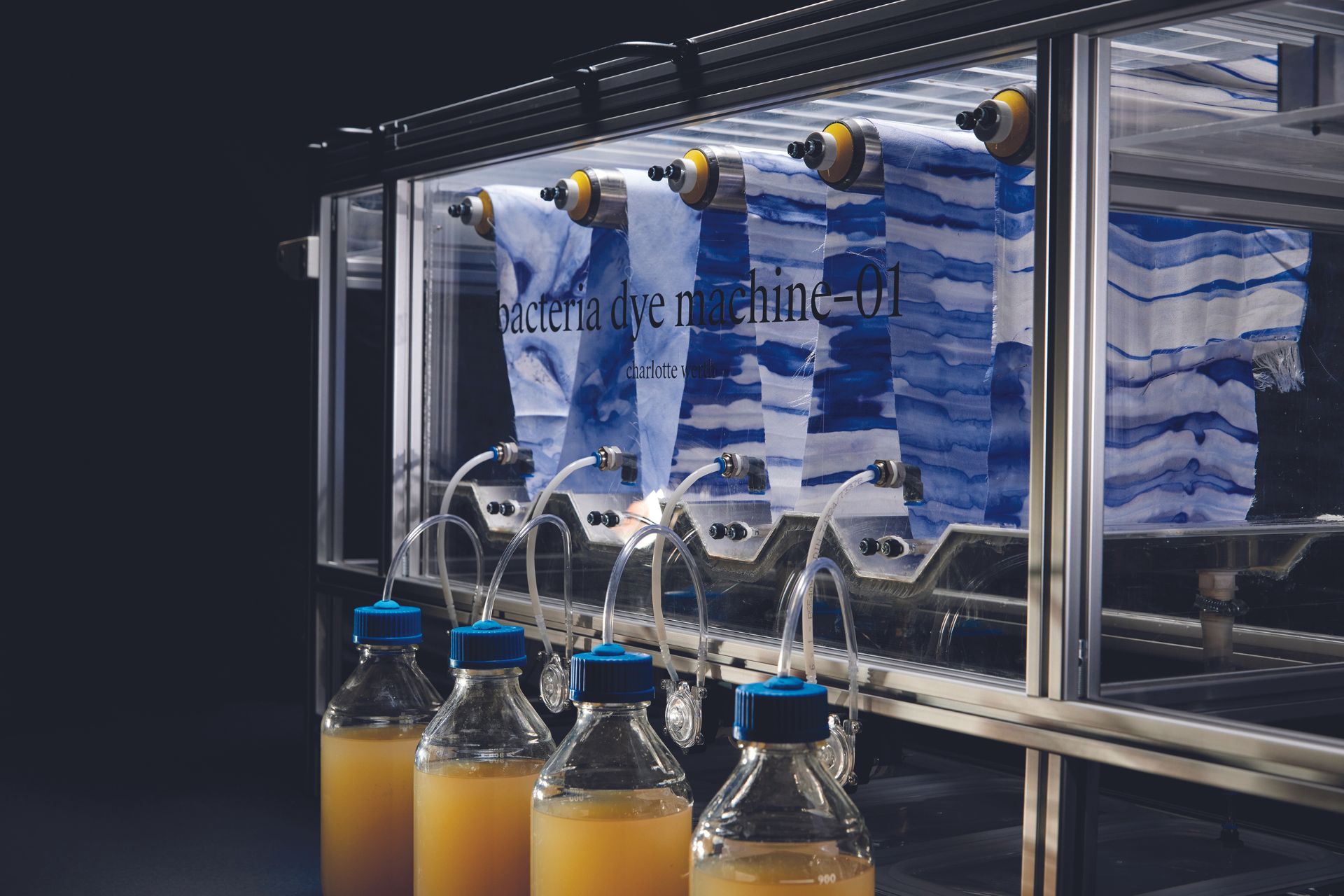
Maison/0’s Rewilding Textiles project. (c) Paul Cochrane
What the author of Biomimicry: Innovation Inspired by Nature explained, Collet says, was ‘how we should learn from nature. How nature runs on solar energy, how the concept of waste doesn’t exist as the death of one is food for another. She talked about circular design – and learning to fabricate as nature does.’
Inspired by the idea of using nature, Collet started to work with scientists to find ways to bring a natural circularity into the fashion world. ‘I realised that there was so much overlap between biology and textiles: they talk of ‘unzipping DNA’., about ‘threads’. There is a natural connection.’ Then, armed with her knowledge, and determination to recraft the planet’s future using art, science and technology, in 2000 she launched the world’s first Masters in Material Futures, followed in 2018 by the first MA in Biodesign.
Today, as Director of LVMH’s Maison/0 creative platform for regenerative luxury and Co-Director of Living Systems Lab Research Group at Central Saint Martins, she is one of the most respected experts on biodesign. Get her going on the subject of making fabrics, and she waxes lyrical about making rose-shaped accessories from mycelium; weaving ‘lace’ from strawberry roots; building tables from corn husks. She can list great ‘biofabricators’ around the world: the Spiber factory in Japan, which makes a silk identical in molecular structure to a spider’s from plants, and the AMSilk factory in Germany, which makes biotech silk from renewable raw materials. And she’s pretty fascinating on how they have ‘taught’ single-cell organisms, from bacteria to algae, to make materials.
‘One of our graduates, who has a project called Keel Labs,’ she enthuses, ‘even makes material from kelp.’ What’s particularly exciting, she says, is that the boom in biofabricating, biomimicry and biodesign is coinciding with new EU legislation to make production across the continent greener. That, she hopes, will be a game-changer, because soon every product in Europe will need a ‘green passport’ to show where its components have been made, and of what, so it can be easily dissembled, composted and repaired if necessary.
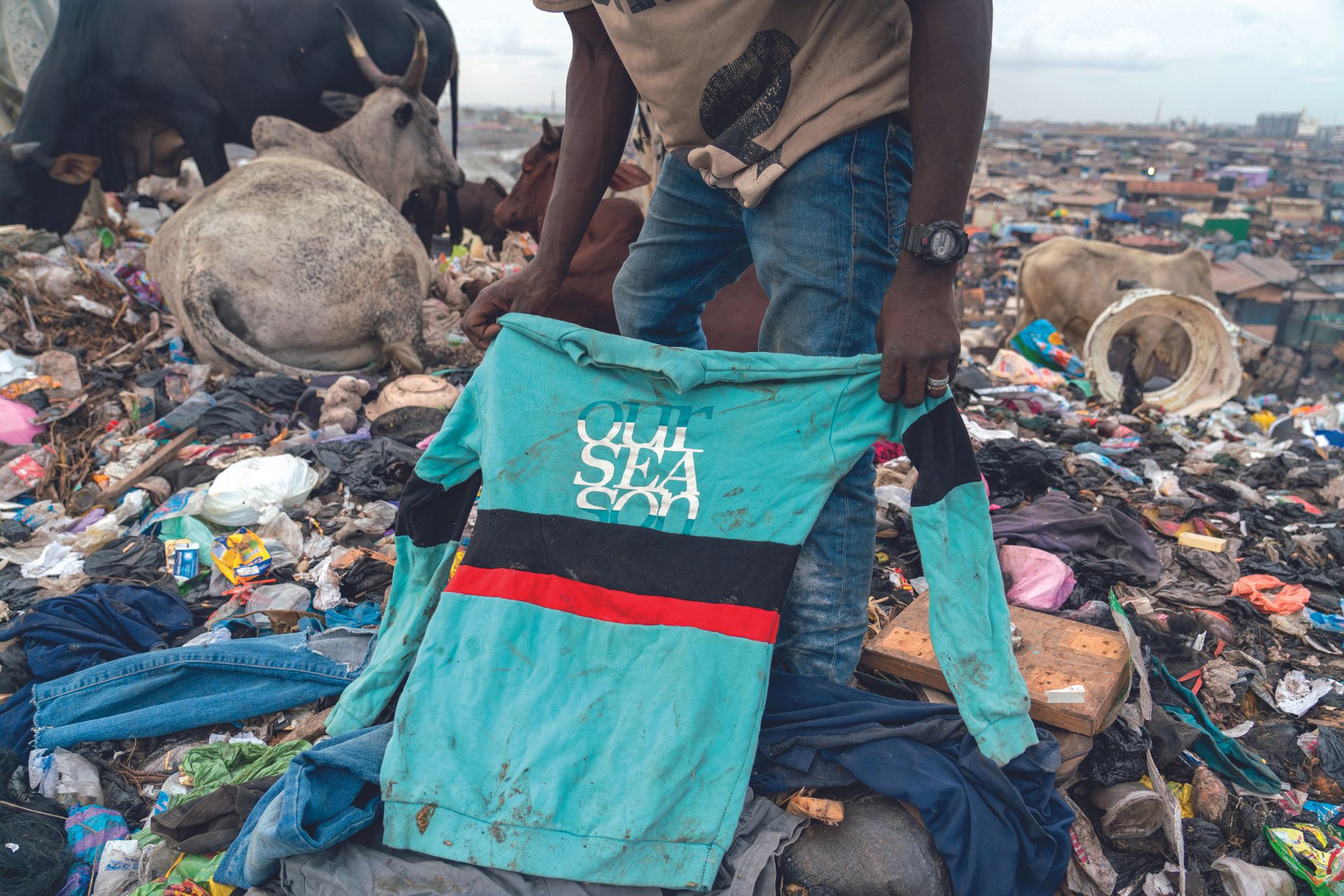
Piles of clothing dumped in Ghana. (c) Shutterstock
And that’s forcing manufacturers to find sustainable solutions. Previously, she says, no one needed to invent new fabrics because they had polyester and acrylic, which were cheap ‘and that’s all we cared about. Now the expense is not even in the discussion – everyone knows the cost of nature needs to be built into every project.’
Businesses are realising, she says, that without a thriving natural world, they won’t survive. ‘If we kill our insects by spraying cotton, we won’t have pollinators, and we won’t have food. If we warm up our planet by three degrees, they won’t be able to produce cashmere. If we have no water, they can’t grow cotton. They have started to realise they have to act if their businesses are to survive.’
Which is why many companies, she adds, now have put sustainability at the heart of their strategy. For instance, LVMH, which sponsors Maison/0, has an environmental academy, she says, ‘so we can help the way they think and design’. It has also stipulated that, by 2030, all of its products have to be eco-designed – across all brands from fashion and wine to design and hospitality.
At Future Fabrics Expo, which took place this June, she says enthusiastically, there were displays of some of the most advanced ‘green’ products devised. One, for instance, showed glasses made in London using biomass waste; ceramics using rice paper, instead of plastic, to impart the patterns onto the clay; cutlery made from silver recovered from X-rays. ‘It’s a whole new way of looking at manufacturing.’
Equally exciting, she says, is students’ thirst to learn. ‘When you and I first started talking about this, 30 years ago,’ she says, ‘students considered sustainability to be an optional thing, not important. Today there is a lot more anxiety: they want skills so they can contribute, to repair the climate and biodiversity.’ And as designers, she adds, ‘they know they can have a real impact. You make one great discovery or implement one decision, and you can change a whole ecosystem.’
Besides, she adds, students are starting to experience the magic of making things using biology and plants. ‘They’re realising that nature is our role model, not people. Once you watch a plant come out of hibernation and change in daylight to make cells turn into a leaf… or watch a mould or mycelium transform food into new materials before your eyes, you’re transfixed. It’s pure alchemy.’
Carole Collet is Director of LVMH’s Maison/0 creative platform for regenerative luxury and Co-Director of Living Systems Lab Research Group at Central Saint Martins. carolecollet.com

